Improved survival of leafcutter workers exposed to oxidative stress
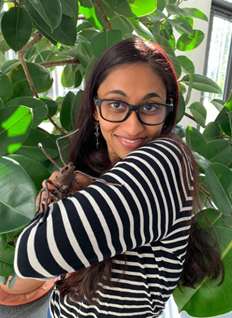
In the recent paper “Queen loss increases worker survival in leaf-cutting ants under paraquat-induced oxidative stress” published in Philosophical Transaction of the Royal Society B, Megha Majoe, Romain Libbrecht, Susanne Foitzik, and Volker Nehring investigated whether worker fecundity extends worker lifespan by exposing three myrmicine ants (Temnothorax rugatulus, Atta colombica, Acromyrmex echinatior) to oxidative stress. They revealed that oxidate stress and subsequent worker death were less pronounced in queenless colonies, where worker reproduction was induced. Here, first author Megha Majoe highlights the main points and shares some pictures.
An Interview compiled by Phil Hoenle, Patrick Krapf, and Felix Oberhauser
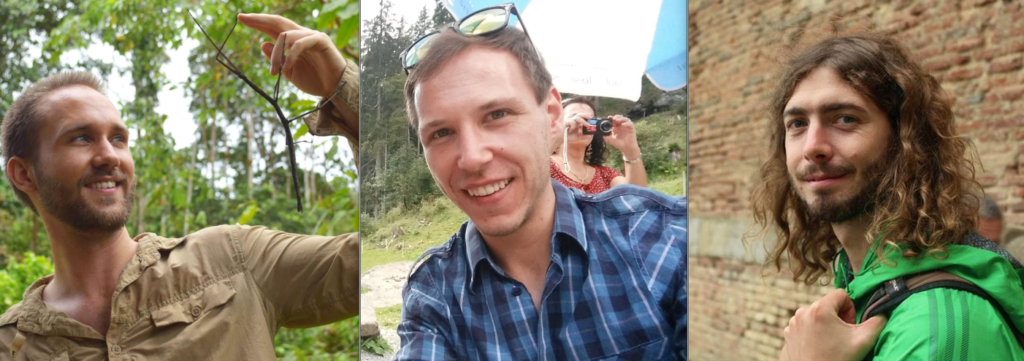
MNB: Could you tell us a bit about yourself?
MM: I am Megha Majoe (pronounced ˈmā-gha ˈmā-jō). I lived in different cities across India till the age of 10, after which my family moved to Oman and then to the U.A.E (United Arab Emirates). I finished high school in Dubai and somewhere along the way, I realized that through all those moves, one static thing was my wish to study animals. I moved to Mumbai, India, to do my Bachelors in Zoology and then was offered a scholarship to pursue my Masters in Zoology at the University of Melbourne, Australia. This was my first real glimpse into fieldwork and into ants. In Australia, I worked with the Australian meat-ant Iridomyrmex purpureus. After that my curiosity for social animals also led me to volunteer and work with pig-tailed macaques Macaca nemestrina in Malaysia and bonnet macaques, Macaca radiata in India. I decided to do my PhD in Germany which also marked my return to ants. My PhD, supported by the DFG (German Research Foundation) is part of a larger research unit studying ageing in social insects (https://k399257d.inetseite.de/Main_Page https://twitter.com/AgingPhD ). It is split between two places, Freiburg and Mainz and I am supervised by Dr. Volker Nehring, Dr. Romain Libbrecht and Prof. Susanne Foitzik. I am currently based at the Johannes Gutenberg University, Mainz.
MNB: Could you briefly outline your recently published article in layman’s terms?
MM: Sure! When we observe the life-history of many organisms, there appears to be a trade-off between the energy they can invest into reproduction and body maintenance (in turn affecting lifespan). Typically, we are all familiar with the ‘live-fast, die young’ rhetoric where an individual would invest in multiple offspring but perish relatively soon; think all those documentaries about salmons and mayflies you have seen. But that is not the case in social insects, where the most reproductive individuals in the colony, the queens, also have the longest lifespans. To understand the proximate mechanisms of ageing, we focus our attention on the workers of ant colonies. They are genetically similar to the queen but typically do not reproduce and have a relatively shorter lifespan compared to their queens. Moreover, they differ in age and physical morphs and have different physiologies associated with this natural variation, including reproductive potential. Studies in some ant species showed that egg-laying workers also lived longer than their sterile counterparts. One way to increase lifespan is to increase resilience to oxidative stress. We tested if workers of three Myrmicine species of different ages that had lived without a queen for 10-15 weeks of their lives would show better resilience to oxidative stress. We found that in the Panamanian leafcutter ants, Acromyrmex echinatior and Atta colombica, workers that had been without a queen for 13-15 weeks were more resilient to oxidative stress than those from queenright colonies. Such an effect was surprisingly not found in the North American acorn ant Temnothorax rugatulus workers which had been split for 10 weeks.

Older colonies of Atta colombica will have an established trail bereft of vegetation. The only green you see will be the pieces of leaves being transported by the workers who over multiple generations, have forged this ‘highway’ connecting their favoured tress to their nests (© Megha Majoe). 
Nascent nests of Atta colombica can be spotted by looking out for little mounds of soil on open fields and meadows. The colony is not big enough to have too many workers or a clear trail, so these mounds are all we have, to go by. Then it is a matter of careful excavation to ensuring we keep the fungus garden intact and don’t injure the queen in the process. Larger colonies are easier to spot of course but the queen is too well guarded and we risk sharp worker mandibles cutting through our skin in a bid to save their queen (© Volker Nehring). 
A transverse section of the fungus garden of an Acromyrmex echinatior colony collected in Gamboa, Panama. Workers of various sizes mill about. We can see pupae and larvae lodged in the small crevices of the garden (© Megha Majoe).
MNB: What is the take-home message of your work?
MM: Queenless workers of both leafcutter ant species invested resources into fighting oxidative stress. It was quite surprising that though Atta colombica workers are functionally sterile, not having a queen still had a positive effect on their resilience to oxidative stress. And that queenlessness had no significant effects on Temnothorax rugatulus workers (which can become fertile and produce male offspring). The study encourages us to take a deeper look into other fitness measures that might be more relevant for different species based on their biology, digging deeper into the environmental context of workers and a potential function of vitellogenin as an anti-oxidant as in honeybees.
MNB: What was your motivation for this study?
MM: Ants are extremely diverse, especially in social structure; they can have different number of queens and have one or many worker castes. Some species can even have completely sterile workers, workers which can produce male offspring, intercastes, gamergates, or species with clonal individuals without a discernable ‘queen-worker’ distinction in their colonies. This social complexity adds another thread to the closely entwined fecundity and longevity in ants. My project delves into manipulating worker fecundity in order to identify molecular pathways and candidate genes that allow the most fecund ants in a colony to also have a longer lifespan. I use transcriptomic analyses as well as experiments on workers from around 13 species from 4 subfamilies. We manipulate their social systems by removing the queen (as in this paper) and test changes in their fitness and fecundity. In this paper, we tested worker-fitness in terms of their resilience to repeated exposure to oxidative stress over the course of a few days.
MNB: What was the biggest obstacle you had to overcome in this project?
MM: My work on the manuscript coincided with the first lockdown in Germany and moving to Mainz for the latter half of my PhD. And we started getting the news that our big field-trips to U.S.A and Panama or even other European countries may not happen. So I had to redesign some projects while working on this manuscript. And then we realized that due to incorrect storage we had lost some ovary samples that could better corroborate what we found in our experiments even though we could cite other studies for the same. Over time, with the help of my advisors, I could navigate through writing, correcting and working on multiple drafts, and plan new projects simultaneously, all of it remotely as we acclimated to the new normal.

An Acromyrmex echinatior worker in the fungus garden (© Volker Nehring). 
Atta colombica workers have more extreme soldier morphs and workers that are functionally sterile. Both leafcutters have developed a symbiotic relationship with the Leucoagaricus fungus that they cultivate (© Megha Majoe). 
Fieldwork in Panama also means a chance to spot anything from agoutis to sloths to capuchins. Location: pipeline road, Panama (© Pol Lannes Salvadό).
MNB: Do you have any tips for others who are interested in doing related research?
MM: My PhD project involves a healthy dose of fieldwork, labwork, and computational work and I would suggest having such a mix if possible. This ensures that one can have a more complete picture of the study system. Reading extensively and just spending some time to observe your biological system can be soothing as well as lead to more questions you can formally explore. Talking about your work in simple terms or writing about it really helps. Academic Twitter can also serve as an avenue to discuss your research find the latest articles in your own field and connect with people in associated fields, learn of their struggles and triumphs to put yours in perspective. It is nice to have people around you to put things into perspective or look at the larger picture when you might get bogged down by small details or overwhelmed by what the computer spews out. This could be your PIs or other colleagues. This process also helps me to introspect on whether I am biting off more than I can chew and getting overly distracted by side projects and new questions that arise from my analyses.
MNB: Where do you see the future for this particular field of ant research?
MM: Ageing is an extremely interesting field of research and the study of ageing in social insects has been gathering momentum for quite some time now. And the readers of this blog do not need me to harp on the potential we have with ants thanks to their diversity. Some ants have been worked on more extensively than others and a lot of information about their biology, their social systems, and genomic or transcriptomic analyses is available. Having a network of labs across the world maintaining colonies over time so we can gauge the actual lifespan of workers and queens of various ant species is an interesting notion that we have considered in our research unit. Improved technology and better collaboration can make more genomes available through initiatives like GAGA. RNA-I (RNA interference), proteomics, and metabolomics all become possibilities to explore once we discover specific candidate genes and their role in ant biology. What I have learned from conducting the same kinds of experiments on different species is that every species can react in a variety of ways to the same experiment which is proof and a possible research avenue as to how and why ants survive using many different strategies based on their innate biology and social context.

Temnothorax rugatulus collected by colleagues from the Chiricahua mountains in Arizona were brought back to the lab and maintained in small nests with 80-100 individuals and single large queens (Macrogynes) (© Megha Majoe).

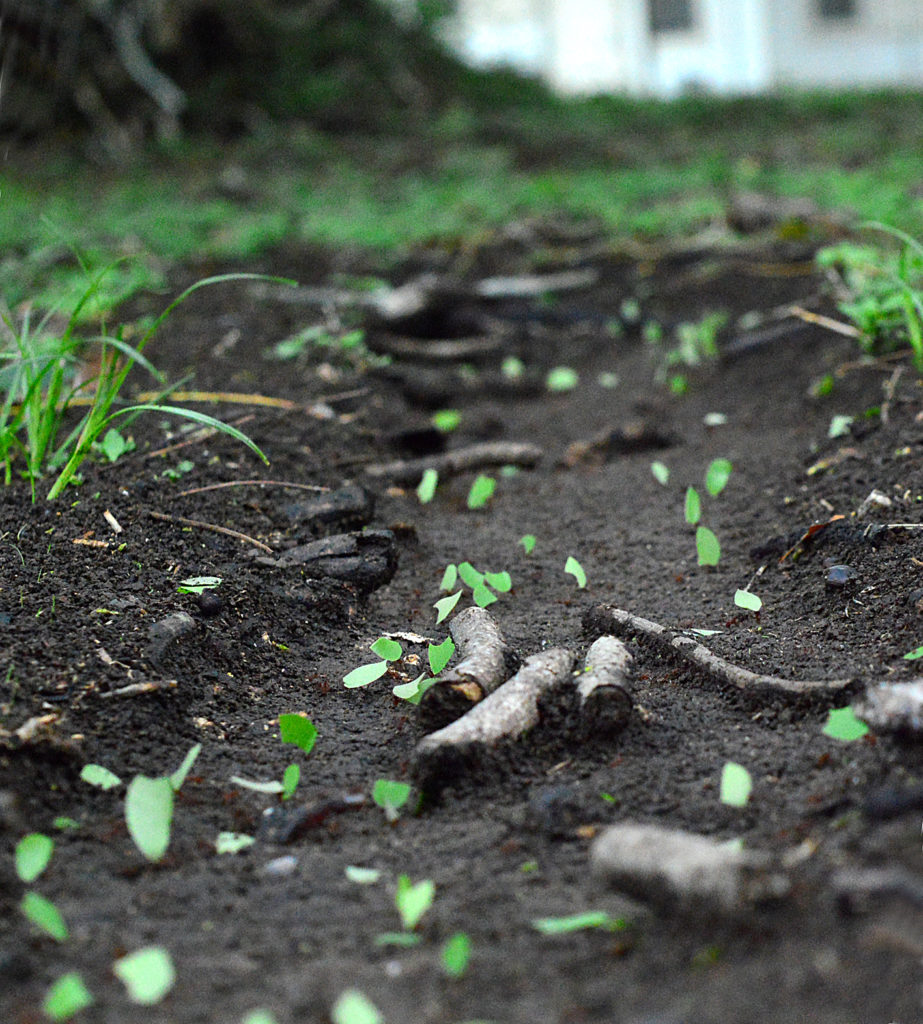
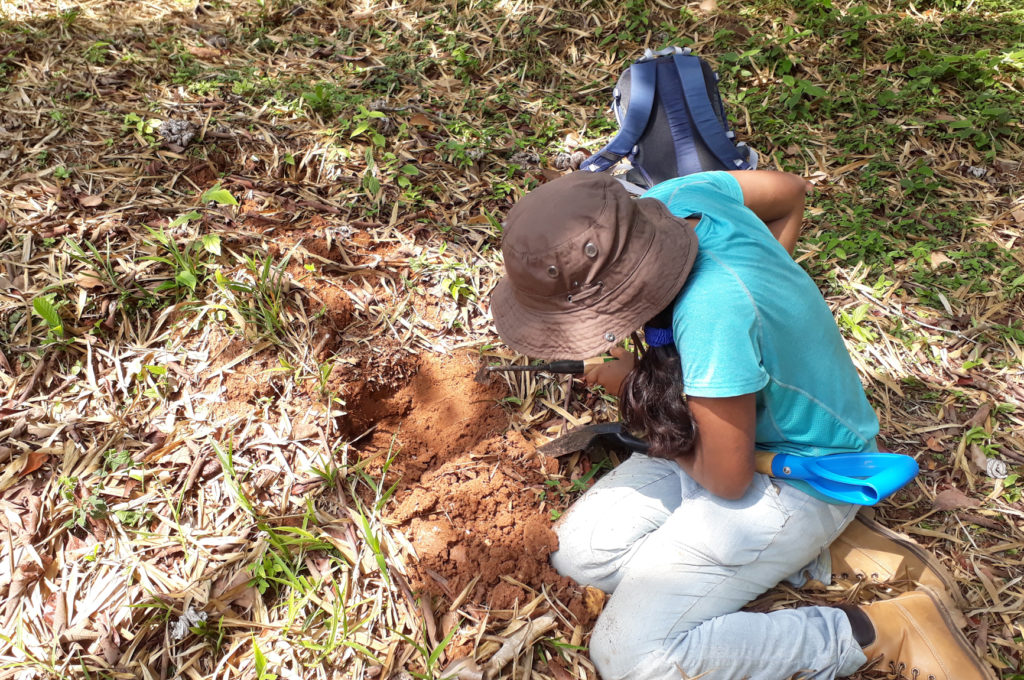
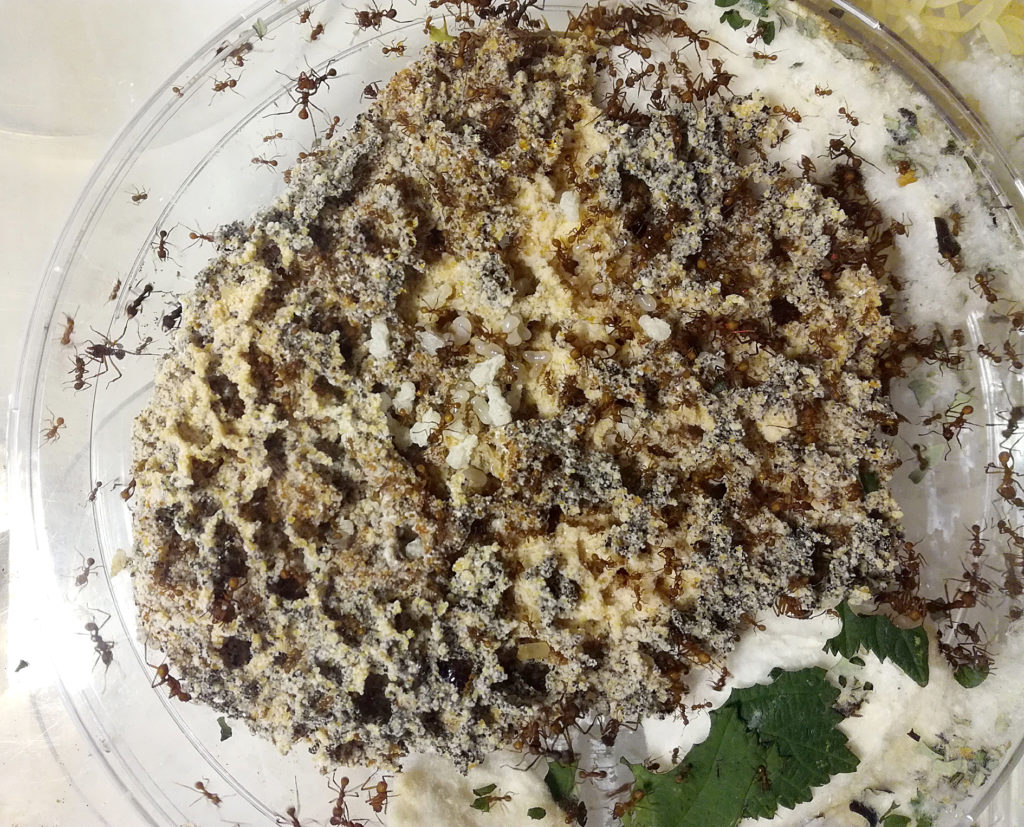
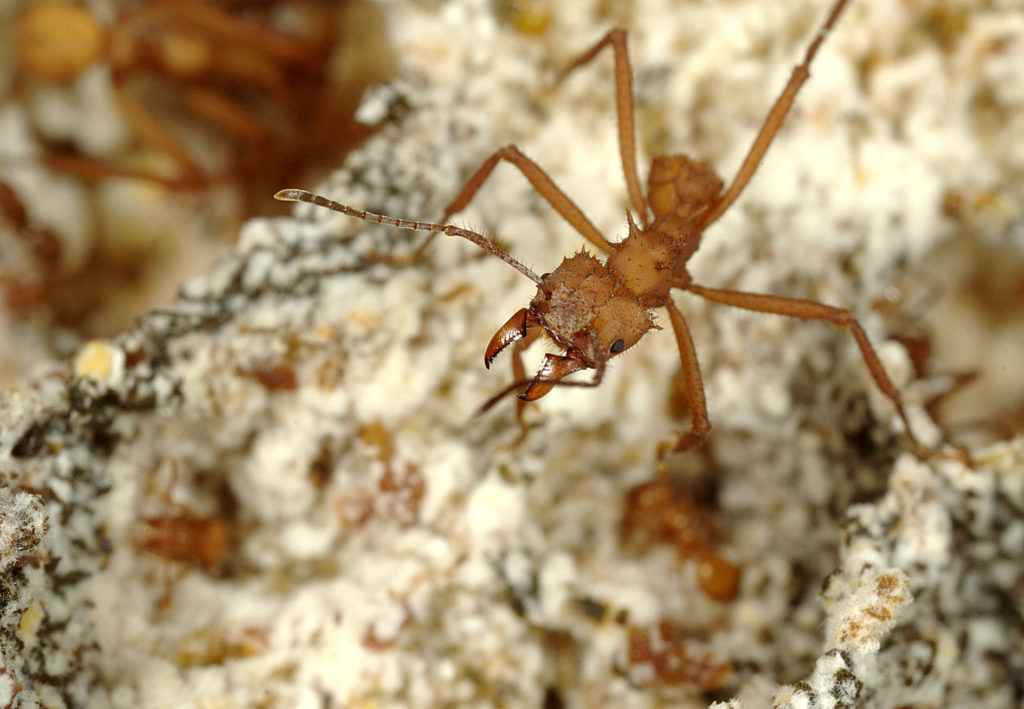
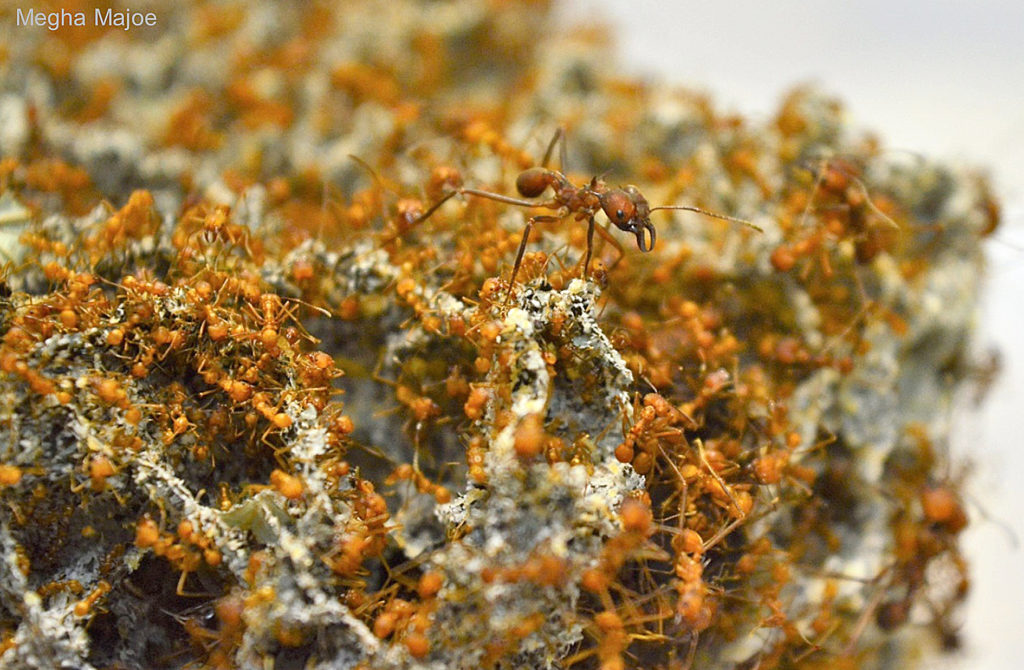
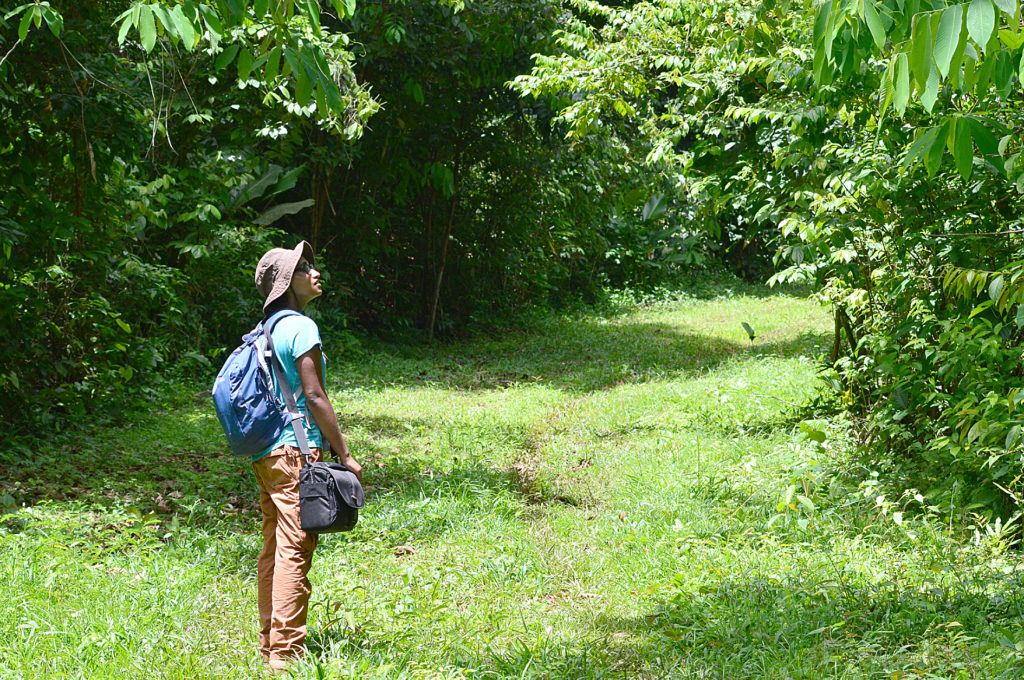
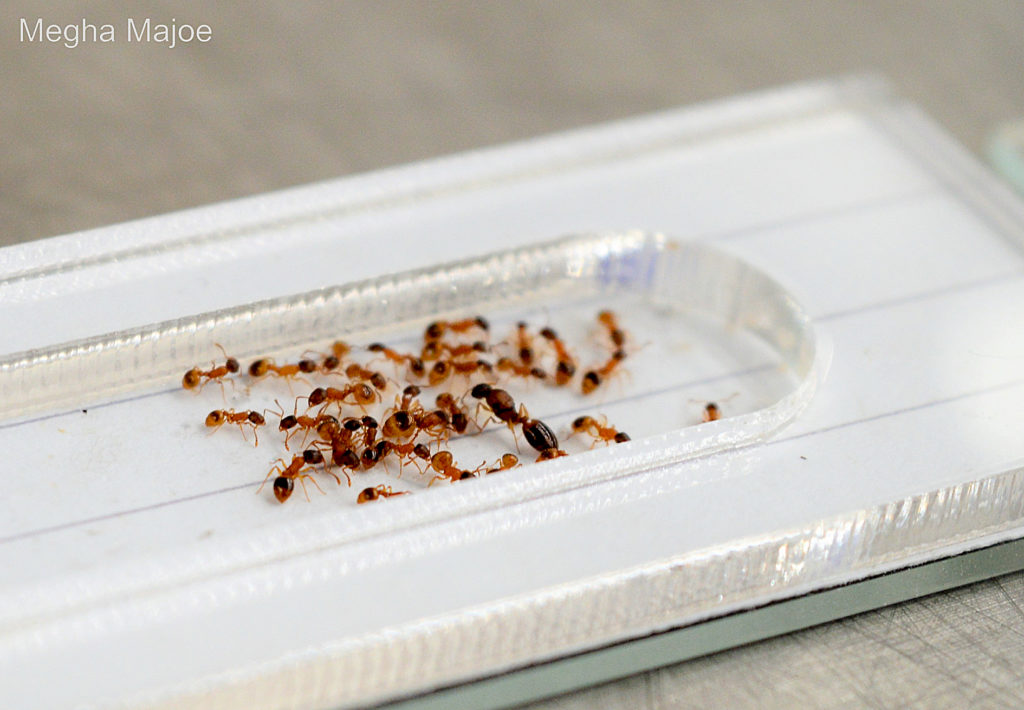

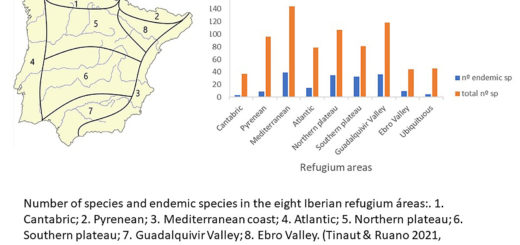

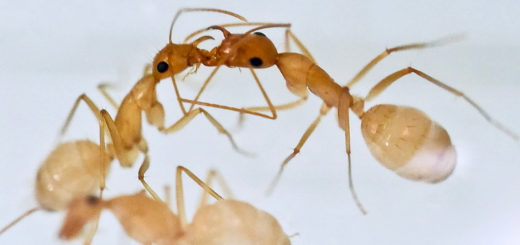
Recent Comments